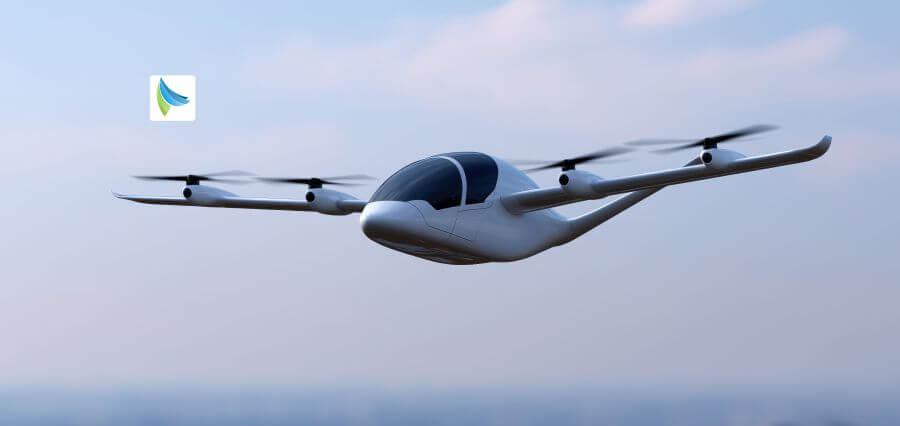The transportation sector is undergoing a profound transformation, which is largely a result of the fast-moving air technology innovations. Urban population increases and congestion are making road-based transport a less viable option, hence the latter is finding it hard to keep up with demand. Air mobility innovations, which include electric vertical takeoff and landing (eVTOL) aircraft as well as autonomous aerial delivery systems, aim at redefining the movement of people and goods in both urban and regional settings. On top of that, these innovations are expected to not only alleviate road congestion but also lower emissions, increase energy efficiency, and give rise to solutions for logistical problems. In fact, the three sectors – public, private and research – governments, companies and institutions, respectively, are now deeply investing in air mobility as the nexus of the future transport systems. The increasing impetus in the field of air mobility is mainly due to the breakthroughs made in electric propulsion, lightweight materials, and autonomous navigation systems. For example, eVTOL airplanes can vertically take off and land, thus enabling them to operate from rooftops, dedicated vertiports, or even smaller urban locations where there are no facilities for conventional airports.
Urban Air Mobility in Cities
Urban air mobility (UAM) is leading the way in changing how cities handle both traffic and transport. In effect, UAM presents a 3D mode of transportation to the commuters with which they can completely avoid the overcrowded roads, cut their travel times, and even get to those urban areas that they couldn’t easily reach before. The primary activity of Joby Aviation, Vertical Aerospace, and Archer Aviation is the development of eVTOL fleets which will be launched for commercial use within the next few years. Moreover, these fleets intend to be linked with public transport networks, ride-sharing platforms, and regional transit systems to give passengers convenient multimodal travel options.
There have been suggestions and trials of using fully autonomous aerial delivery drones to carry out parcel and medical supply deliveries. In order to enable faster and more flexible distribution than the usual ground-based logistics networks, these systems must be able to navigate the most complicated cityscapes. Besides, this breakthrough ushers the commodities sector in a new era of on-demand services, which consume less space in large warehouses in city centers and thus can lead to lower operational costs and carbon emissions. As a result, numerous cities such as Singapore, Los Angeles, and Dubai are already implementing pilot programs to evaluate the feasibility of integrating UAM into their transport infrastructure and hence, paving the way for global adoption.
Autonomous Flight for Safer Mobility
Autonomous air vehicles (AAVs) are essential to the coming change in air mobility. They are expected to offer a safer and more efficient mode of operation. These vehicles go through advanced sensors, artificial intelligence, and real-time data analytics to interact with the complex airspace hardly needing any human intervention. AAVs are capable of lessening the human error factor by substituting human pilots thus, flight paths can be optimized for energy saving and delay reduction. Moreover, the integration of urban air traffic management systems makes sure that the autonomous vehicles have safe operations in presence of conventional aircraft and other aerial vehicles in a crowded area.
Autonomous air vehicles can be tasked with transporting passengers, but they also play a critical role in emergency response, medical evacuation, and disaster relief, delivering aid in the shortest possible time. As an example, a group of autonomous drones could deliver urgent medical supplies to a remote area that is also traffic-congested, and simultaneously, larger eVTOLs can be transformed into mobile hospitals during the emergency. The advent of these features implies that autonomous air vehicles are not just a timely convenience, but a revolutionary force that can improve public safety, emergency preparedness and the overall resilience of urban and regional transport networks.
Sustainability Driving Air Mobility
Sustainability drives innovation in air mobility. To achieve this, developers are actively pursuing electric propulsion, clean hydrogen fuel cells, and hybrid-electric power systems as key solutions to reduce the environmental impact of air travel. The eVTOLs are the new generation of aircraft that in no way do they add to the atmosphere during their flights, and this is the idea behind these machines to be used in cities seeking to meet climate goals and reduce air pollution. They do this via also conducting lifecycle assessments to ensure manufacturing, usage, and end-of-life processes are all environmentally friendly.
The combination of advanced materials, energy-efficient propulsion, and AI is expected to be the key factor which will lead in the adoption of sustainable urban air mobility solutions, and this will happen very soon. Urban planners and local government officials are increasingly integrating air mobility into their smart city frameworks and this means provision of vertiports, charging infrastructure, and air traffic management systems. The safe scaling up of operations quickly and effectively with minimal harm to existing urban environments will be the result of these investments. What is next in line for air mobility after the technology has fully matured is indeed a total transformation of the transportation sector to a more environmentally friendly option, highly efficient and interlinked with the other urban and regional systems.
Conclusion
The introduction of new technologies in the air mobility sector, the way transportation will look is going to change dramatically. These changes will bring faster, safer, and more environmentally friendly solutions to the transport of both passengers and goods. The cities through the use of advanced technologies like eVTOL aircraft, autonomous air vehicles, and electric propulsion systems can tackle the problem of congestion, lessen the emission of pollutants, and improve the connectivity. The air mobility will be the next big thing in the transport networks of the cities after the governments, businesses, and research institutions have spent money on the infrastructure and regulatory frameworks. The change that is happening hints at not only a difference in our mode of travel but also a bigger change towards smarter, cleaner, and more efficient urban and regional mobility systems.












